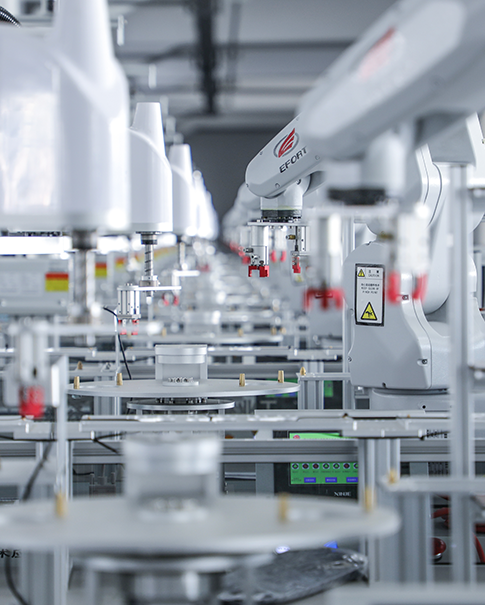The global industrial automation market is on track to reach an astounding $265 billion by 2025, driven by the rapid adoption of technologies like robotic arms across various industries. From automotive to pharmaceuticals, electronics, and food and beverage, automation is transforming how businesses operate.
Central to this revolution is the rise of the Industrial Internet of Things (IIoT), providing real-time data-driven insights and paving the way for AI-powered self-correcting machinery. These advancements promise unprecedented efficiency and innovation on the manufacturing floor.
The integration of advanced technologies has accelerated the adoption of industrial automation. Supporting innovations, including sensors, pneumatics, machine vision, and complex mechanics, have made automated systems faster, more accurate, and more cost-effective than ever before.
The IIoT has further enabled seamless wireless communication between devices, coupled with cloud-based platforms and big data analytics. This synergy empowers engineers to monitor system performance in real-time and predict maintenance needs based on historical trends.
Looking ahead, factories equipped with AI-driven systems will revolutionize production processes. Self-regulating machines capable of adapting to maintain performance and efficiency are shaping the future of smart manufacturing.
Robotic systems are increasingly becoming integral to manufacturing operations. Advanced subsystems have enhanced their capabilities, including improved accuracy, payload capacity, flexibility, and reach, enabling their deployment across diverse applications.
Robots now handle tasks ranging from picking and placing to assembly, welding, painting, and testing. In the automotive sector, for example, robotic arms perform precise and challenging tasks like deburring and polishing engine blocks with remarkable force and precision.
A new wave of collaborative robots, or cobots, has also emerged. Designed to work alongside humans, these robots excel at repetitive tasks, such as installing car seats or attaching windscreen wipers. In the food and beverage industry, machine vision-equipped robots identify defects in consumable goods and remove faulty products from production lines. Robots are also widely used in packaging and palletizing, handling heavy loads delicately without causing damage.
As artificial intelligence and machine learning continue to advance, the capabilities and applications of robotics in manufacturing are set to expand even further.
Despite its numerous advantages, successful implementation of automation systems is a complex process. Companies must navigate various challenges throughout the project lifecycle, from preparation and implementation to operation and maintenance.
Effective automation adoption requires robust planning, clear objectives, and collaboration among stakeholders with diverse expertise. When executed correctly, automation delivers increased efficiency, output, accuracy, and flexibility. However, poor implementation can lead to subpar results, including inefficiencies in product selection, engineering coordination, deployment timelines, and system maintenance.
To avoid costly errors, businesses need meticulous planning, skilled personnel, and a synchronized approach across disciplines. Missteps in any of these areas can result in significant setbacks, both financially and professionally.
Automation and robotics hold immense potential for reshaping the industrial sector. However, realizing these benefits requires overcoming the complexities of implementation. Engineers and decision-makers must approach these projects with strategic thinking, careful planning, and collaboration.
By addressing potential pitfalls such as inadequate testing and poor coordination, companies can unlock the full potential of automation. The integration of these technologies demands not only technical expertise but also a commitment to innovation and continuous improvement.
The industrial automation market is poised for extraordinary growth, transforming industries with advanced technologies. While the opportunities are immense, achieving successful implementation demands careful planning and execution.
By leveraging the power of IIoT, robotics, and AI, businesses can build smarter, more efficient factories ready to meet the challenges of tomorrow. However, navigating the complexities of automation requires collaboration, expertise, and a strategic approach.
With the right focus and preparation, companies can harness the full potential of automation, driving innovation and success in the rapidly evolving industrial landscape.
Email us
Reply within one working dayVisit us
32D Guomao Building, No.388, Hubin South Road, Siming DistrictDisclaimer : Salesplc sells new and surplus products and develops channels for purchasing such products. This website has not been approved or recognized by any of the listed manufacturers or trademarks. Salesplc is not an authorized distributor, dealer, or representative of the products displayed on this website. All product names, trademarks, brands, and logos used on this website are the property of their respective owners. The description, explanation, or sale of products with these names, trademarks, brands, and logos is for identification purposes only and is not intended to indicate any association with or authorization from any rights holder.
Copyright @2024 SalesPlc Limited. Sitemap
/ Blog
/ XML
/ Terms And Conditions
/ Privacy Policy
 Network Supported
Network Supported
